By David Weiner
Oscar-winning director William Friedkin’s SORCERER hit theaters the summer of ’77 in the wake of the STAR WARS juggernaut, and so the timing could not have been worse for this thrilling, underrated jungle adventure that I have grown to love.
 A reworking of the 1953 French film THE WAGES OF FEAR based on Georges Arnaud’s novel LE SALAIRE DE LA PEUR, Friedkin’s SORCERER reunited the controversial EXORCIST director with his amiable THE FRENCH CONNECTION star Roy Scheider, himself white-hot off his starring turn in JAWS and a high-profile cameo in MARATHON MAN opposite Dustin Hoffman. The minimal cast was rounded out by Bruno Cremer, Francisco Rabal, and Amidou as a quartet of criminals from disparate backgrounds who team up to transport highly volatile nitroglycerin across 200 miles of the treacherous South American jungle for an American oil company.
A reworking of the 1953 French film THE WAGES OF FEAR based on Georges Arnaud’s novel LE SALAIRE DE LA PEUR, Friedkin’s SORCERER reunited the controversial EXORCIST director with his amiable THE FRENCH CONNECTION star Roy Scheider, himself white-hot off his starring turn in JAWS and a high-profile cameo in MARATHON MAN opposite Dustin Hoffman. The minimal cast was rounded out by Bruno Cremer, Francisco Rabal, and Amidou as a quartet of criminals from disparate backgrounds who team up to transport highly volatile nitroglycerin across 200 miles of the treacherous South American jungle for an American oil company.
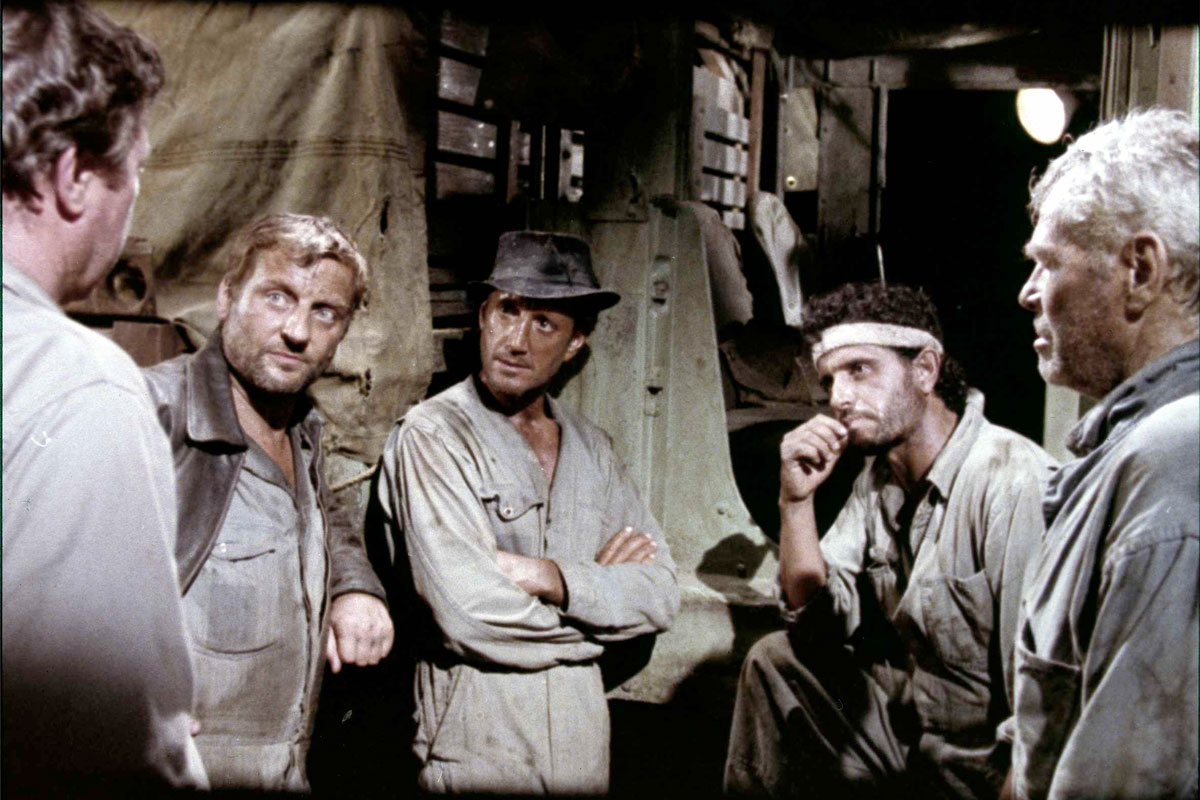 Because of a seismic shift in audience appetites, SORCERER debuted in the summer of ’77 to mixed reviews and disappointing box office. In terms of mass appeal, the damage to SORCERER and other serious dramas and genres was inestimable as films like Friedkin’s were steamrolled by George Lucas’ rollicking Sci-Fi fantasy, which (along with Steven Spielberg’s JAWS) changed the rules of Hollywood and influenced the general public’s palate for big-screen entertainment.
Because of a seismic shift in audience appetites, SORCERER debuted in the summer of ’77 to mixed reviews and disappointing box office. In terms of mass appeal, the damage to SORCERER and other serious dramas and genres was inestimable as films like Friedkin’s were steamrolled by George Lucas’ rollicking Sci-Fi fantasy, which (along with Steven Spielberg’s JAWS) changed the rules of Hollywood and influenced the general public’s palate for big-screen entertainment.
I spoke with Friedkin when SORCERER was remastered for its Blu-ray debut, and the veteran filmmaker told me of the film’s initial reception, “It is what it is, and there’s no reason to question that or to fight that. Audiences get the films they want, and they go to them in vast, vast numbers, and in the old competition between fantasy and reality, fantasy wins hands down, because people do want to be entertained and not challenged.”
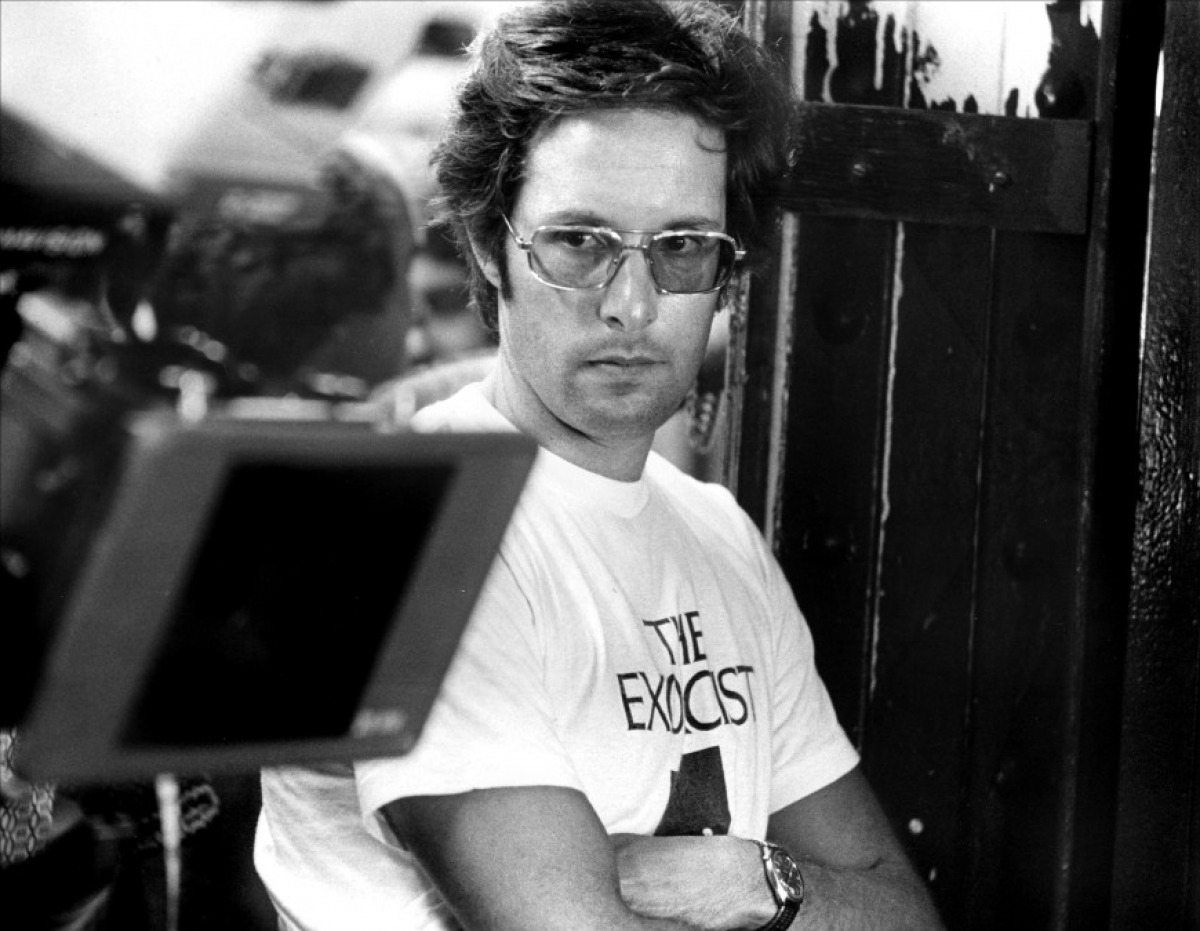 It took a full four years for Friedkin to follow-up his one-two punch delivery of THE FRENCH CONNECTION in 1971 and THE EXORCIST in 1973. Pressed to come up with the ideal follow-up to the indelible films that gave him Academy Award recognition, he kept returning to the idea of making his own adaptation of Arnaud’s 1950 novel and the 1953 film. “I was obsessed with [SORCERER] and driven to make it,” he said of the epic undertaking that was filmed in the Dominican Republic, Paris, Jerusalem, New Jersey, and Veracruz, Mexico.
It took a full four years for Friedkin to follow-up his one-two punch delivery of THE FRENCH CONNECTION in 1971 and THE EXORCIST in 1973. Pressed to come up with the ideal follow-up to the indelible films that gave him Academy Award recognition, he kept returning to the idea of making his own adaptation of Arnaud’s 1950 novel and the 1953 film. “I was obsessed with [SORCERER] and driven to make it,” he said of the epic undertaking that was filmed in the Dominican Republic, Paris, Jerusalem, New Jersey, and Veracruz, Mexico.
 “I didn’t do it as a remake of WAGES OF FEAR, I did it as a new version,” he said of the film that takes place on multiple continents. “These characters were four strangers marooned in a desperate situation, hiding out from retribution, who had to either cooperate or die — and that seems to be the world’s condition today. All of these countries are strangers who don’t like each other. We don’t have the same philosophies. … But if we don’t all cooperate — like if the countries in the Middle East don’t make peace with Israel, they’ll all be destroyed — it’s mutually assured destruction, and that’s what SORCERER and WAGES OF FEAR are about.”
“I didn’t do it as a remake of WAGES OF FEAR, I did it as a new version,” he said of the film that takes place on multiple continents. “These characters were four strangers marooned in a desperate situation, hiding out from retribution, who had to either cooperate or die — and that seems to be the world’s condition today. All of these countries are strangers who don’t like each other. We don’t have the same philosophies. … But if we don’t all cooperate — like if the countries in the Middle East don’t make peace with Israel, they’ll all be destroyed — it’s mutually assured destruction, and that’s what SORCERER and WAGES OF FEAR are about.”
 A straightforward thriller with no supernatural undertones, the film’s title was inspired by a Miles Davis album, and a knowing nod to THE EXORCIST. Interestingly enough, SORCERER’s working title was actually BALLBREAKER — and making the film turned out to be just that given the sprawling production locations, challenging resources, on-set conflicts, and some unrelenting weather conditions.
A straightforward thriller with no supernatural undertones, the film’s title was inspired by a Miles Davis album, and a knowing nod to THE EXORCIST. Interestingly enough, SORCERER’s working title was actually BALLBREAKER — and making the film turned out to be just that given the sprawling production locations, challenging resources, on-set conflicts, and some unrelenting weather conditions.

Though he did not set out to directly remake WAGES, Friedkin went to lengths to explain to me why he thinks “remake” is not such a bad word in Hollywood: “There’s a wonderful production on Broadway … of WHO’S AFRAID OF VIRGINIA WOOLF starring Tracy Letts. It’s a big smash hit, and not because it’s a remake — it’s another version. Anytime someone does a production of HAMLET it’s not a remake, it’s a new interpretation with different actors. … So I thought that WAGES OF FEAR could be reinterpreted for a modern audience because it dealt with certain truths.”
In today’s remake/reboot-obsessed Hollywood, I wondered what Friedkin would think of a remake of his own take on WAGES, and if he thought the film’s incredibly intense, signature swaying bridge stunt (which is featured on the film’s promotional posters) could ever be recreated in the same way again. “It would be done all CGI [today],” replied Friedkin matter-of-factly. “I had a great production designer named John Box who worked for [director] David Lean. … We came up together with a way of engineering that bridge so that it was safe, that it looked lethal, but was actually very safely constructed so there were no accidents — knock wood. But any time you attempt something like that, there’s always the unexpected.” 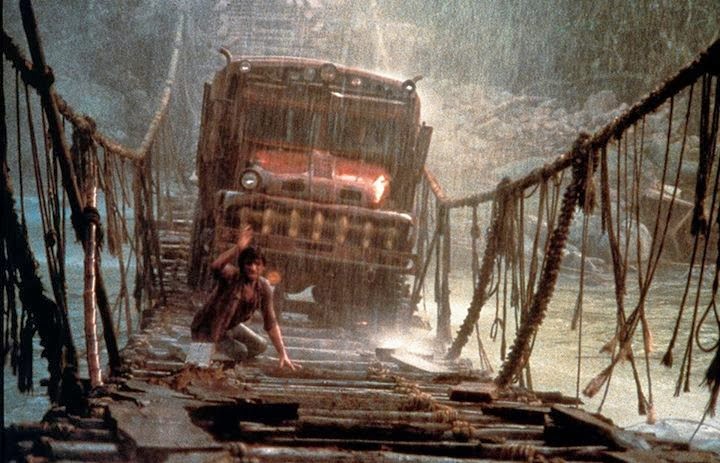 Expanding on his take on remakes, Friedkin explained, “I know that films beget other films. I started out learning from other films. I never went to film school. I certainly borrowed ideas from them. I mean, I didn’t steal from them, but I was influenced by them, or they pushed certain buttons. … On the other hand, I think that there is a paucity of ideas today, and so [Hollywood goes] back to what worked before and, generally, they’re right — it works again because audiences love what’s familiar. They’re much less tolerant of something new. They’ll give a lot more space to something that’s familiar [compared] to something that challenges their expectations.”
Expanding on his take on remakes, Friedkin explained, “I know that films beget other films. I started out learning from other films. I never went to film school. I certainly borrowed ideas from them. I mean, I didn’t steal from them, but I was influenced by them, or they pushed certain buttons. … On the other hand, I think that there is a paucity of ideas today, and so [Hollywood goes] back to what worked before and, generally, they’re right — it works again because audiences love what’s familiar. They’re much less tolerant of something new. They’ll give a lot more space to something that’s familiar [compared] to something that challenges their expectations.”
 SORCERER is a worthy film that stands the test of time four decades after it was released. Taut and crackling with tension with limited dialogue, it’s got a genuine sense of gritty reality in that inimitable ’70s filmmaking style. Friedkin’s overlooked masterpiece is a true nail-biter, and one can see simply by what’s onscreen why the working title was BALLBREAKER. They simply don’t make ’em like they used to…
SORCERER is a worthy film that stands the test of time four decades after it was released. Taut and crackling with tension with limited dialogue, it’s got a genuine sense of gritty reality in that inimitable ’70s filmmaking style. Friedkin’s overlooked masterpiece is a true nail-biter, and one can see simply by what’s onscreen why the working title was BALLBREAKER. They simply don’t make ’em like they used to…
Enjoy these SORCERER lobby cards, foreign and domestic:
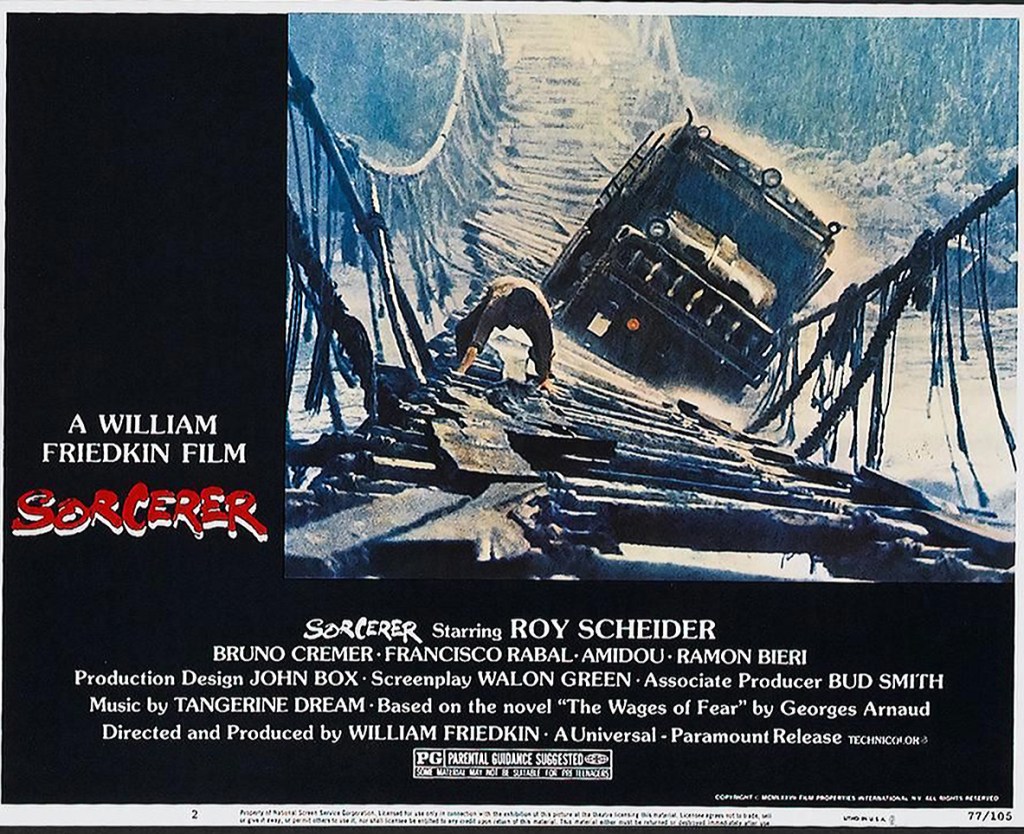
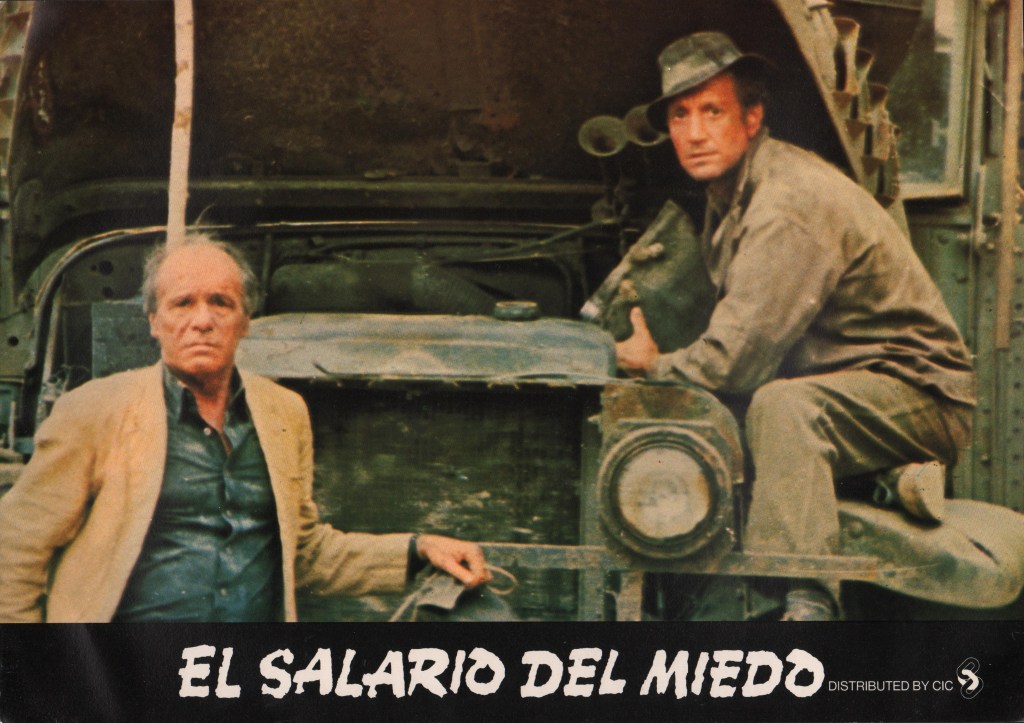
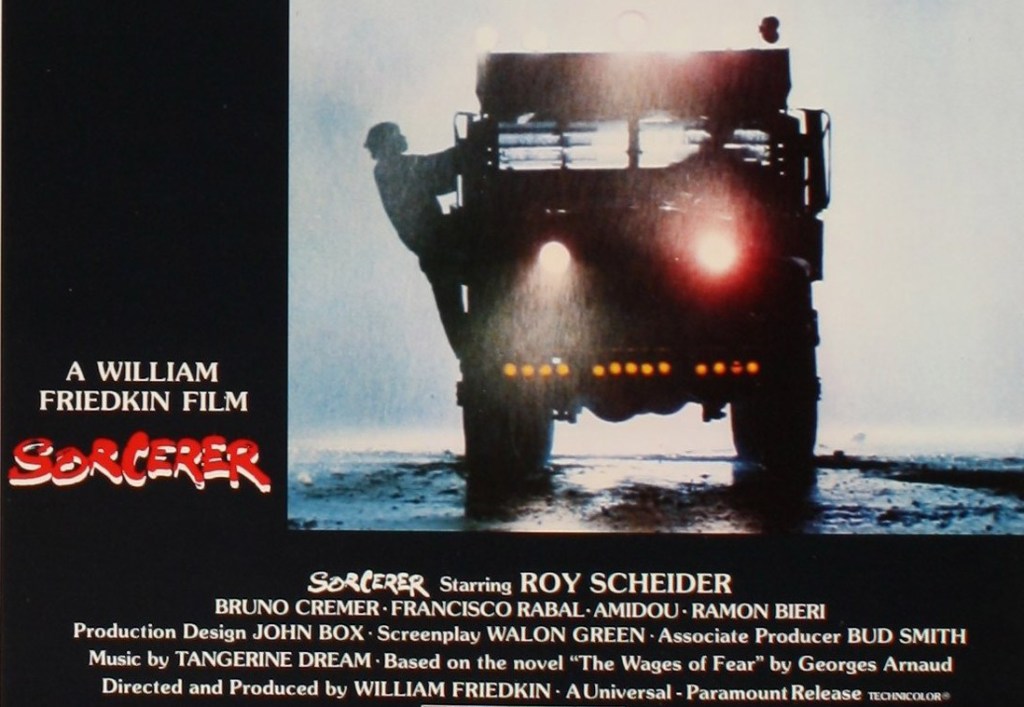

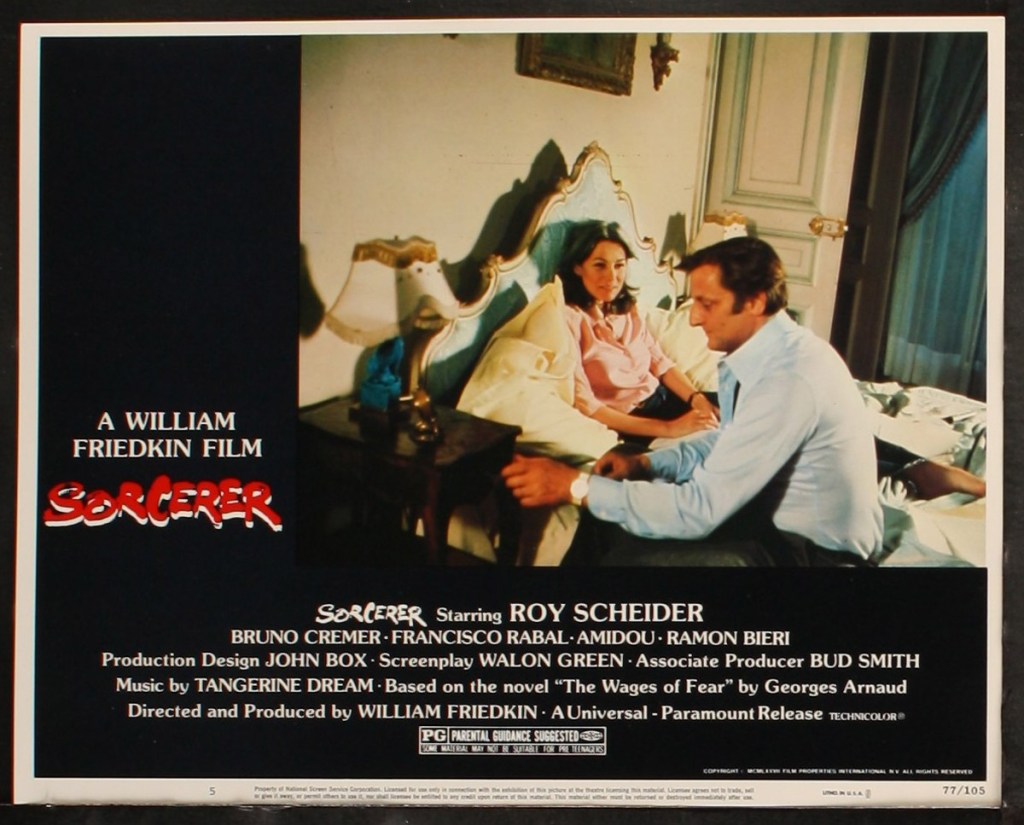


POST-SCRIPT (Monday, August 7; the day William Friedkin passed away. He was 87):
William Friedkin represented one of the last remaining titans of the Maverick-cinema mindset of the ’70s within the Hollywood community. His gritty realism on film connected with audiences looking for — and responding to — a more kinetic, in-your-face style of filmmaking entertainment that flourished in the post-Vietnam era.
I’ll always remember how the late, great Billy Friedkin went out of his way to thank me “from a boat in New Zealand” for my write-up on SORCERER. I think any positive press about this film that was considered a box-office failure truly resonated with him. He was a Hollywood legend who didn’t pull punches and was full of controversial opinions, but his tenacity was matched only by his thoughtfulness and appreciation. RIP, Billy.

###
More Lobby Cards to ogle:
- Ridley Scott’s ALIEN Lobby Cards from 1979
- YOU ONLY LIVE TWICE James Bond Lobby Cards from 1967
- THE SPY WHO LOVED ME James Bond Lobby Cards from 1977
- Original STAR WARS lobby cards from 1977
- JAWS franchise Lobby Cards
- PLANET OF THE APES franchise Lobby Cards
###
Please take a moment to “like” IT CAME FROM… on Facebook and “follow” on Instagram and on Twitter for more great retro content!
Writing and maintaining IT CAME FROM… is a true labor of love. Please consider showing your appreciation and helping to keep the site ad free and free for all (no paywalls) by donating a couple bucks with BUY ME A COFFEE. It’s quick and easy!

